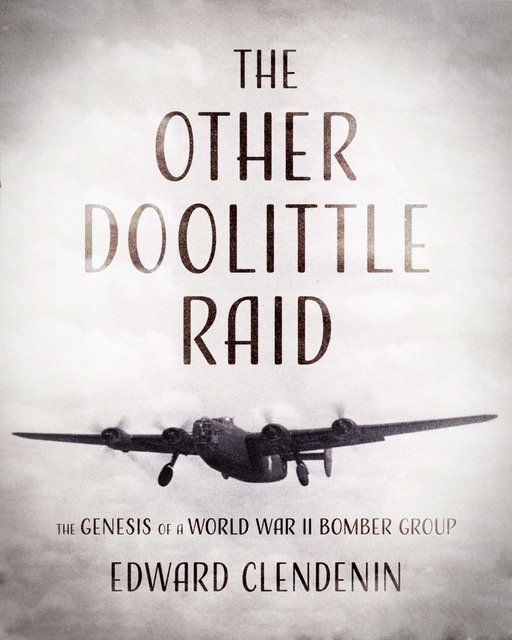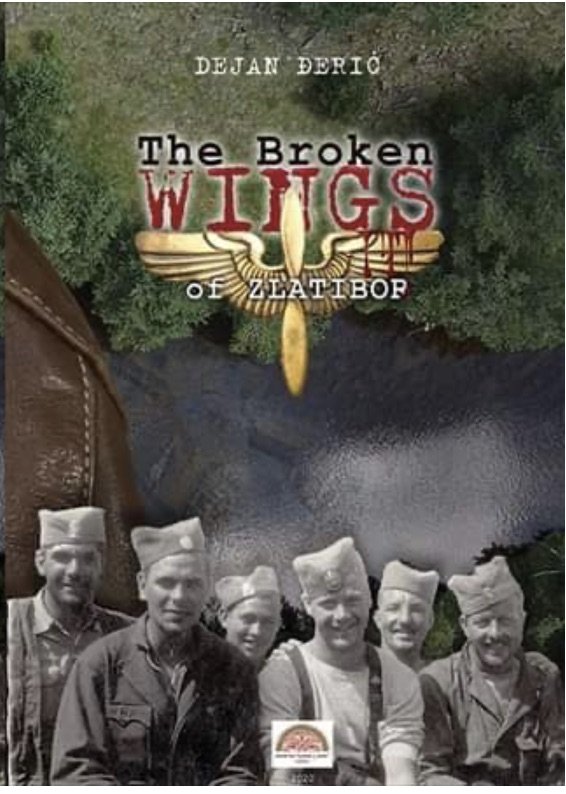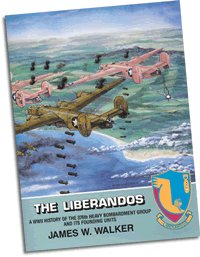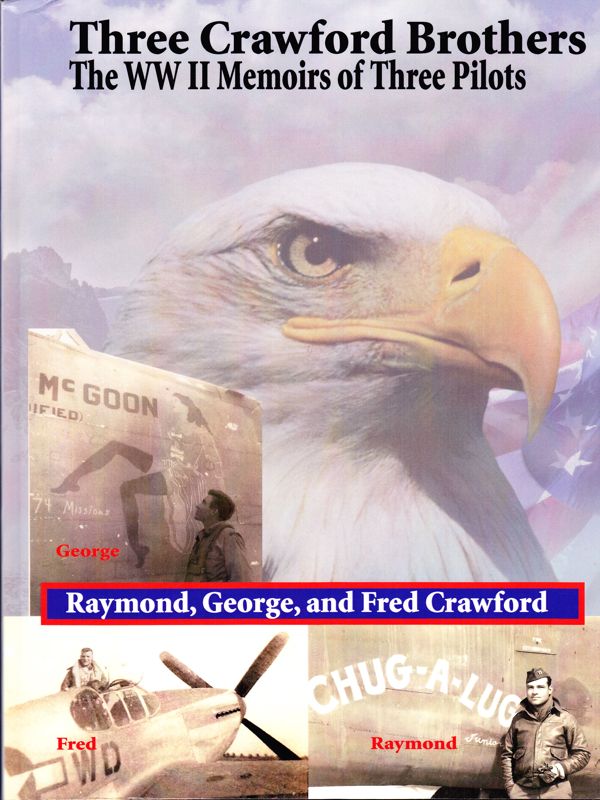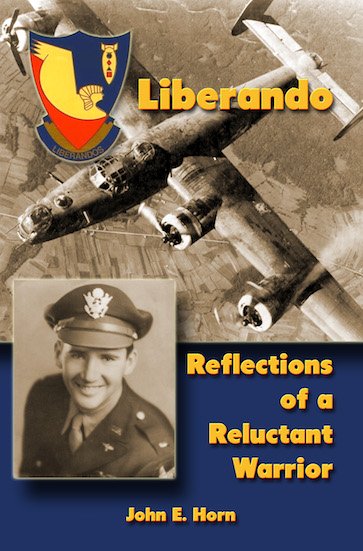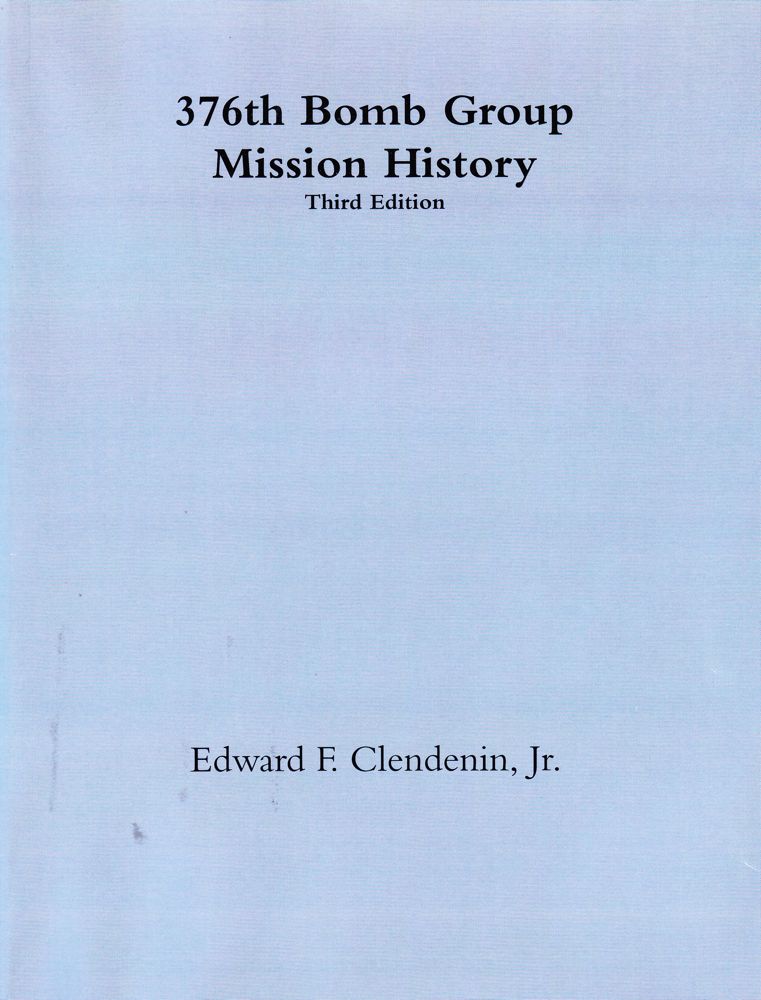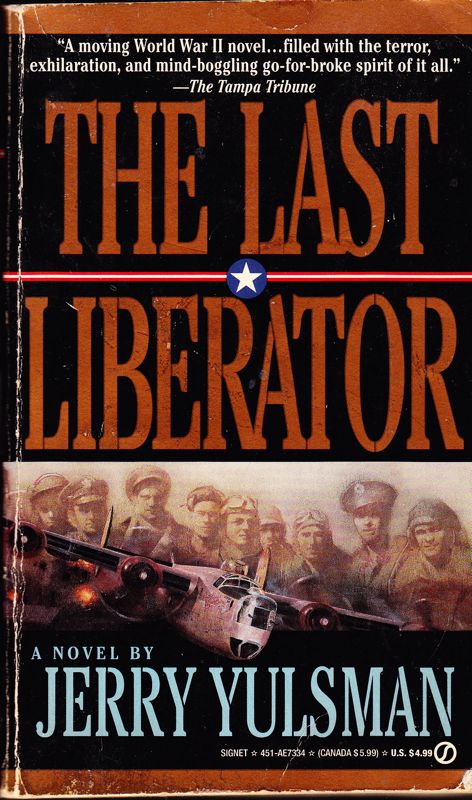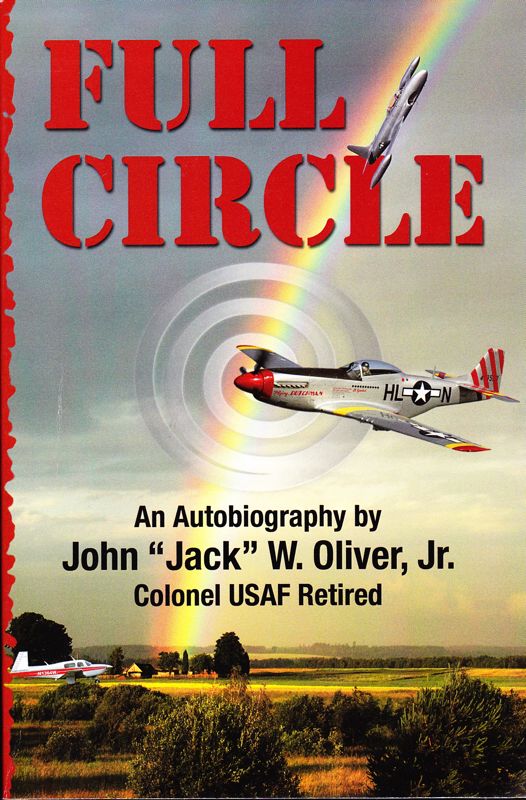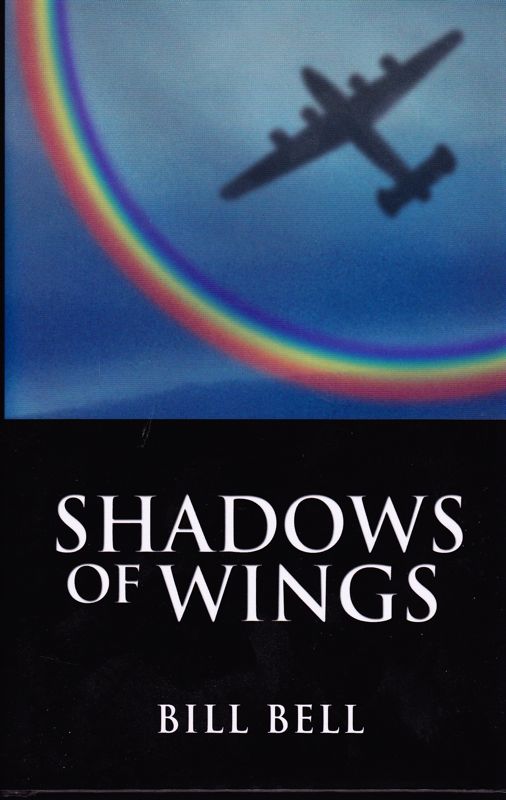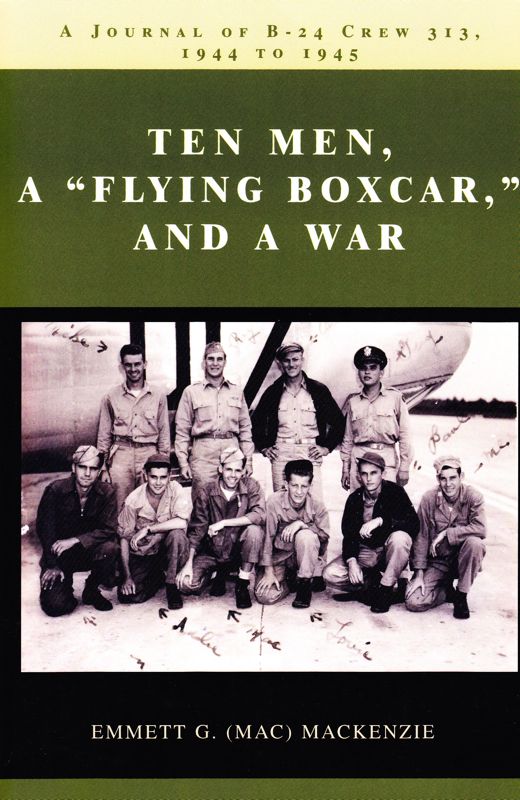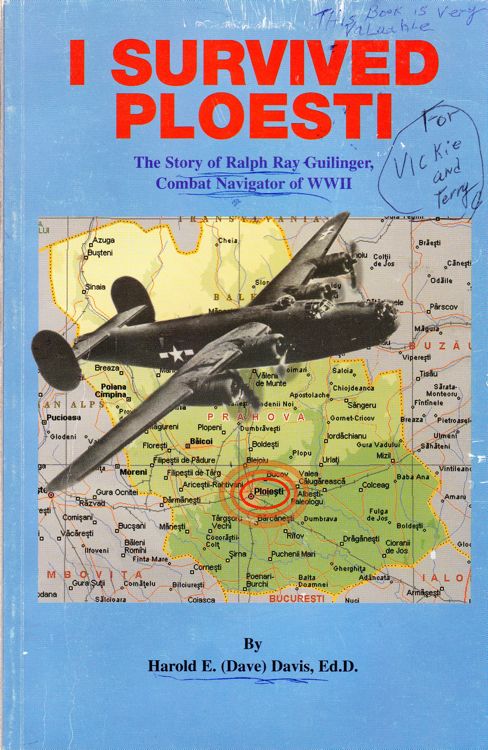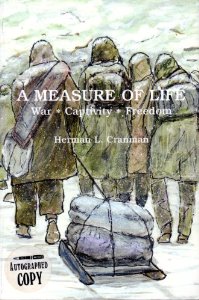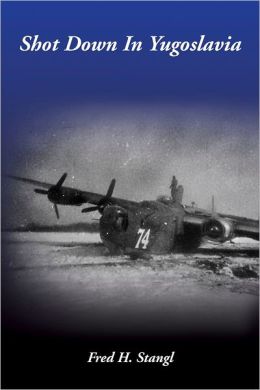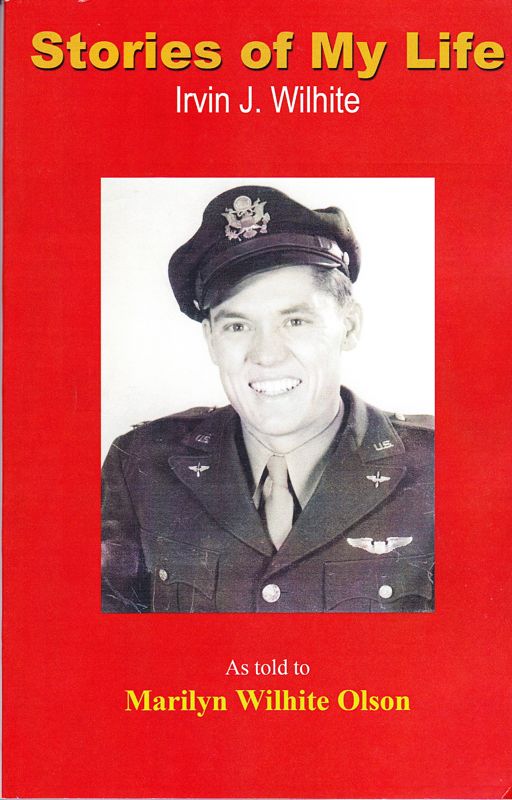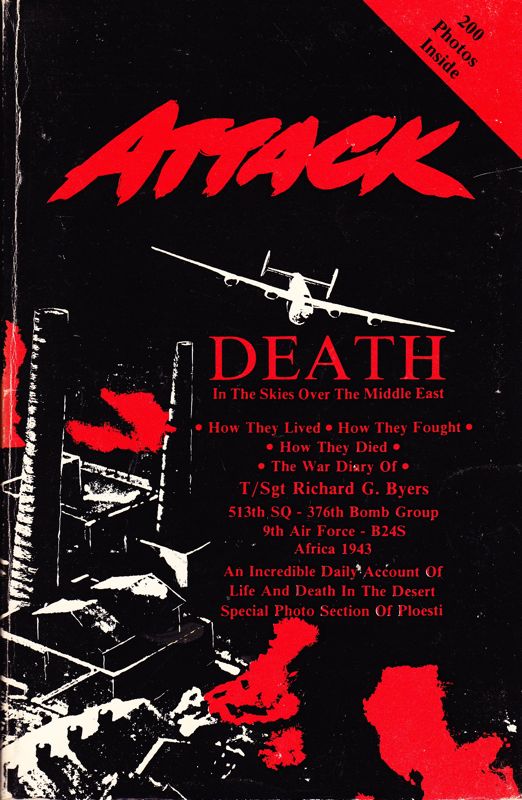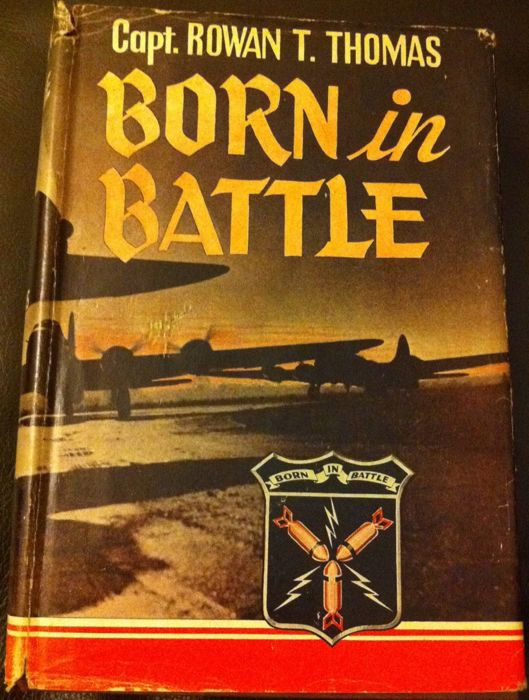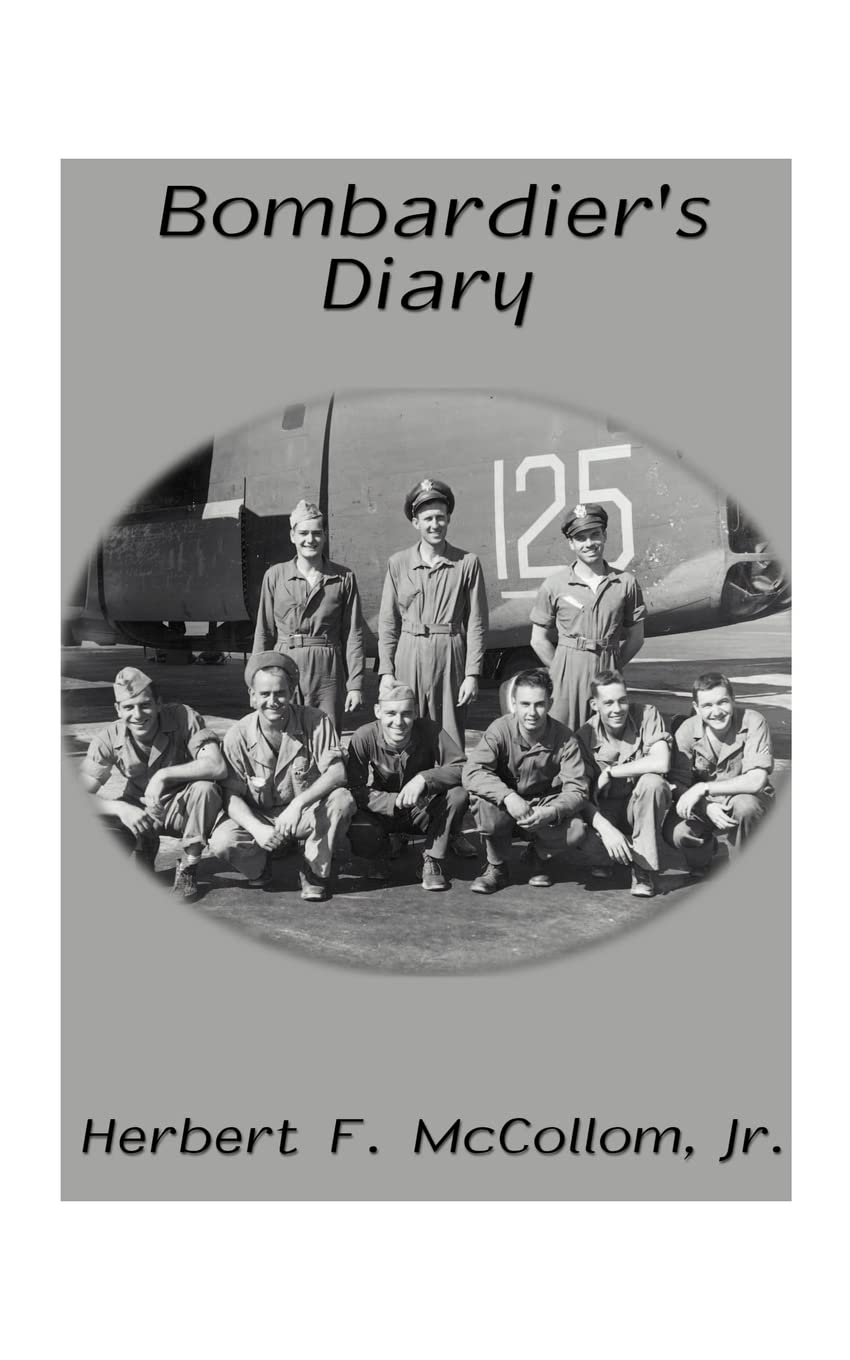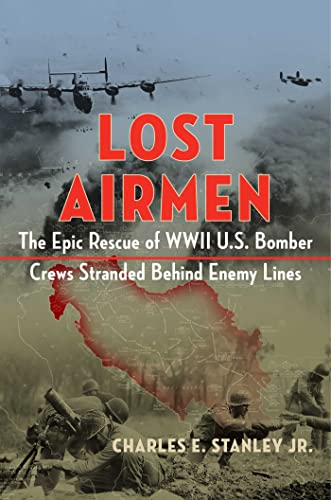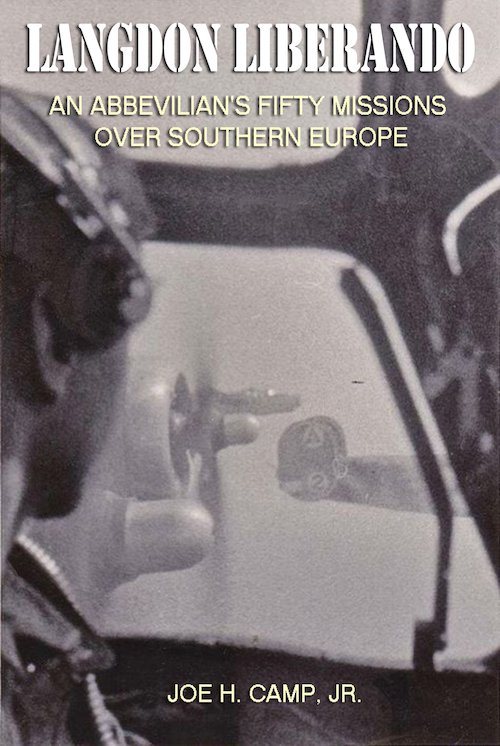Robert L. Nugent Mission May 29, 1944
Monday, 29 May 1944, Target: Weiner-Neustadt, Austria. Flying a B-24J, Squadron aircraft #75.
We were awakened at 0300 hrs. by an operations clerk who stated that breakfast would be at 0330, briefing for the mission at 0430, and down to the aircraft at 0500 hrs.
After pre-flighting #75, including checking the bomb load, ammo, guns, turrets and camera, we spotted a double green flare shot from the tower: meaning start engines and get ready to taxi out.
That was at 0535 hrs. Take off was pretty smooth and at 0550 hours, we rallied over our base, getting into formation and kept climbing for altitude until all our group’s aircraft, thirty-nine in all, had taken off and had gotten into formation. At 0650 hours, we headed north along the eastern coast of Italy and the Adriatic Sea. By the time we reached the northern end of the Adriatic Sea, we were at 21,500 feet altitude. We then turned north-east over the Yugoslavian coast, just north of Pola and Trieste. We flew north of Zagreb and then to Austria, crossing the Danube River. So far, the mission had been very peaceful. We skirted to the north of Graz, Austria, as that Austrian city had been bombed before. It was a mean target area with a lot of large anti-aircraft guns. It was a good size industrial city, and I took photographs of potential military targets. We could see much railroad activity. Many freight cars were loaded with war material. What a prime target area!
Still flying northeast, we spotted a large German Luftwaffe air base at St. Andrea, Austria. There were no cement or asphalt runways, just a large green turf flying field with many underground hangars; that is, you could see the hangars and work areas cut into the hillside. I was kept busy photographing that airdrome. At one time, I counted twelve German fighter aircraft taking off nearly at once and about twenty other fighter aircraft were dispersed around the large airfield.
Our target at Weiner-Neustadt was German aircraft fighter assembly factory.
As we neared it on our bomb run, we could see that the target was a large, well-dispersed factory and that two areas of it had been bombed just ahead of us. We were carrying sixteen 500 lb. general purpose bombs. Just minutes before bombs away, we ran into real intense flak barrage. It was big stuff and very accurate. It was either 88 MM. or 105 MM. We were right in their scopes, and we were being hit! Suddenly, there were hits all over the aircraft. On this mission, I was flying the nose turret and could observe and see most everything forward and aft. It was a clear day over Austria and not too cold at our bombing altitude of 21,500 feet.
We had hits just behind the pilot’s compartment and two large hits in the bombardier’s and the nose area. Neither Frank Rakett, the navigator, nor I was hit. Then more hits in the bomb bay area. Three out of four of the bomb bay doors were shattered. Then we got a big hit--basketball size about 12 inches from the ball turret. The ball turret gunner was hi tin the right foot, but it was not a serious injury, a flesh wound that put him out of action for the rest of this mission. Then more flak hits shattered some control cables but didn’t quite sever them. They quickly had to be repaired, as we would have gone down due to lack of control had they been severed. Another piece of flak hit a cloth tool bag right beside our engineer, Clarence Johnson; luckily that hit just damaged some tools and missed him!
We then had a hit that severed some electrical wires, which knocked out our interphones and from then on, all communication on board was done by word-of-mouth. We had to do a lot of shouting to each other to be heard. We had another hi tin the bomb bay just after ‘bombs away” that went through the top of the aircraft, exiting right next to the top turret gunner, Ray Fry, from Richmond, CA, but thankfully that hit missed him.
We thought the flak barrage was over, as we had made a hard right turn off the target after bombs away; when all of a sudden, right behind me we received a direct hit in number three engine. All kinds of gas and oil lines were severed. All of us really had to work to help the engineer close off those severed gas and oil lines. We lost hundreds of gallons of gas and a lot of oil before we had the gas and oil lines closed. The aircraft reaked of gas and oil fumes. How we stayed aloft was a mystery, but we were still not out of the flak barrage and suffered another bad hit in the area of our left flap, tearing a gaping hole in it and hitting the left wheel blowing out the tire. We figured then if we could make it back to our base, it would be a rough landing. Finally, the last hit we received was in the tail turret. That hit missed Homer Flanagan1s butt by about 2 inches, but it tore a big chunk out of the azimuth control tract and meant that he could not move the tail turret from side to side, but he could still raise and lower his twin 50 caliber guns.
Due to the loss of engine #3 and other flak damage, we had to fallout of formation, and we were limping along and also losing altitude. Another B-24 from our group must also have been severely hit, and it was directly behind us and slightly below us, about 100 yards back, when suddenly it just nosed over--no smoke, nor flames nor an explosion. We figured it must have received a direct hit in the pilot1s compartment, and they must have been killed instantly. But we watched its downward plunge and as far as we could follow it, we did not see any parachutes from it. We lost some good friends in that aircraft, whom we had been in training with since October 1943.
About fifteen minutes after we had left the target area, four P-511s picked us up and gave us escort out of Austria and over most of northern Yugoslavia, as we were a cripple, losing altitude, by ourselves and one engine knocked out. Plus the fact that the tail turret was half inoperative and no ball turret. Had we been jumped by even a couple of German fighters, we would have had to bail out. We really appreciated those P-511s as an escort. We still had our doubts whether or not we could make it back to friendly territory. As we neared the coast of Yugoslavia, just about a minute before our P-51 escort left us, a crippled P-38 fighter aircraft caught up with us. He had one engine feathered and joined up with us and flew just off our left wing tip the length of the Adriatic Sea down to Bari, Italy.
Back to northern Italy, when we had arrived at the Adriatic Sea coast, the pilot passed the word to each of us to jettison· everything we didn’t need overboard to help lighten the ship to help conserve gas. First, we dumped all the 50 caliber ammo. There must have been between 6,000 - 8,000 rounds of it, as we hadn’t fired a round of it at the Luftwaffe. The only rounds we had used was when we test fired those ten 50 caliber guns early into the mission. Both 50 caliber waist guns and mounts went over board and also the ball turret was taken out of its cradle and harness and dropped overboard. Also all nine flak vests and some extra tools our engineer, Clarence Johnson, said he didn’t need. We flew about 1,000 feet above the Adriatic Sea on the way back to out base, limping along ready to send out a “mayday" radio signal in case we had to ditch or bail out of "ole #75". Bob Gephert, our radio operator, had sent a radio message describing our plight, our battle damages, and the fact that one man was injured, plus the fact that one engine had been shot away. But even though we limped along on three engines, we made it to friendly territory and just south of Bari in south-eastern Italy. We turned right and skirted the big Italian naval base at Taronto. There were some U.S. Navy ships docked there, as they were there amassing for the forth coming invasion of southern France. We spotted one U.S. battleship and several cruisers, plus many other naval ships. We had been warned many times not to fly directly over the naval harbor at Taranto, and if any bomber got too close, they would let go with a real flak barrage, regardless if you were friend or foe. Those big naval ships didn’t want to take any chances. Some of those U.S. ships had been at Pearl Harbor on 7 Dec. 41.
After passing north of Taranto, we flew a low and straight shot to our base at San Pancrazzio, Italy. We had a landing priority, but still we shot off a "double red" Verry pistol flare to let the base know we had wounded aboard, an engine out, flap damage, and a blown tire. We didn’t land on the steel mat runway, but landed just to the left of the steel mat runway in the dirt area. It was still a rough landing due to the blown tire, but the pilot, James Paul, and the copilot, Vern Townes, did one fine job of landing "ole #75" as beat up as she was. We bumped to a halt, an ambulance pulled up first to meet us, and then it seemed like dozens of jeeps and weapons carriers with a whole mob of guys met us. No one clambered aboard until the injured ball turret gunner was removed from the aircraft. Then everybody wanted to hear our story. Most said they had never seen a B-24 bomber with so much damage from flak alone. German fighter plane cannon shells and those mean rockets they lob at bombers leave a lot of damage, that is understood, but just hundreds of flak hits and holes from flak alone was incredible.
The squadron maintenance officer and our ground crew chief said "ole #75" would never fly again! And after a lot of pictures were taken of all the battle damage #75 received and the battle damage forms and other paper work were filled out, "ole #75" was turned over to the service squadron to be slowly stripped of all her useable parts and never to fly again, but just rust and rot away ignominiously on the plains of Italy. Nevertheless, it was amazing from the battle damage that aircraft took (a real pounding, and with a 11 the gasoline we had lost, anyone of those hits could have blown her sky high and nine guys with her) that she didn’t blow, but instead, brought us safely back to our base, to live and fly again. I was one proud guy to have flown on that fine B-24J aircraft, number by our squadron, as "Number 75".
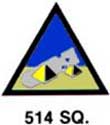
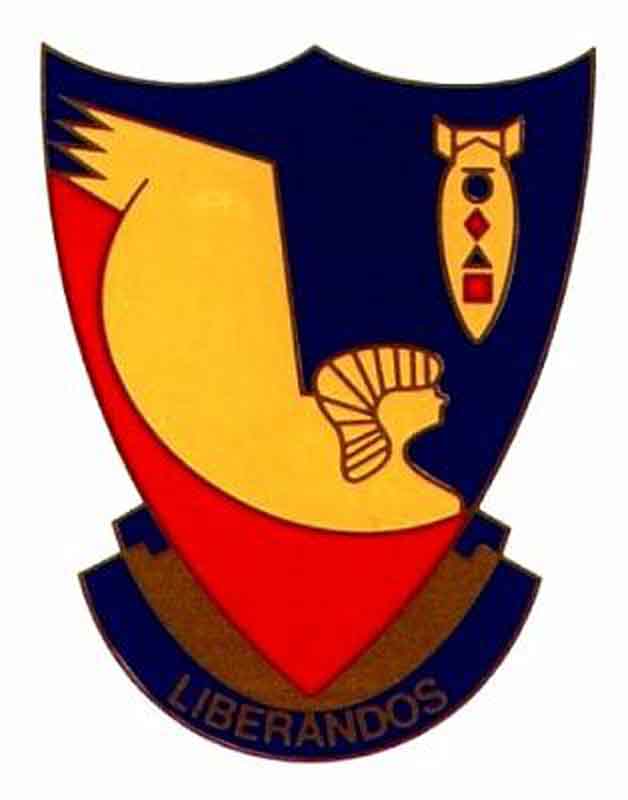
The website 376bg.org is NOT our site nor is it our endowment fund.
At the 2017 reunion, the board approved the donation of our archives to the Briscoe Center for American History, located on the University of Texas - Austin campus.
Also, the board approved a $5,000 donation to add to Ed Clendenin's $20,000 donation in the memory of his father. Together, these funds begin an endowment for the preservation of the 376 archives.
Donate directly to the 376 Endowment
To read about other endowment donation options, click here.
Reunion
NOTE change in month !!!
DATES: Oct 26-29, 2023
CITY:Tucson, AZ
HOTEL: Double Tree Suites Airport hotel
7051 South Tucson Blvd., Tucson, AZ 85756
520-225-0800
Click here to read about the reunion details.
